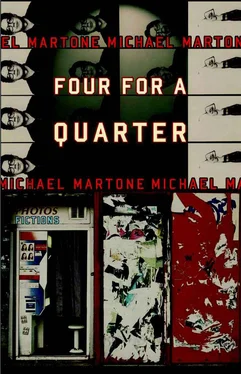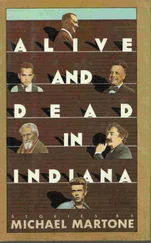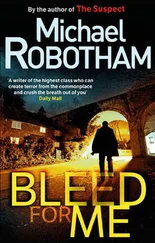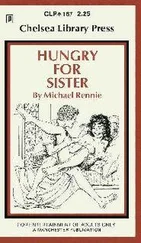JEFFERSON
He was the writer. Well, Lincoln, too, wrote, signed on to write Jefferson's sequel. And Jefferson is the one whose backstory has legs. The heritage of his transmitted DNA decoded as avidly as the Declaration is parsed for intention. My favorite plot twist? The branch of Hemmings's children by Tom who passed into Ohio, refusing to cotton up to the analysis of their genes, preferring White-ness over Jefferson-ness. How odd our desire that this one have a life that is narrative, not simply anecdote. And irony too. Backstory and, there on the escarpment, he's got George's back. The inventor of political parties, the originator of difference. The Great Deconstructor has the least “face.“ No distinguishing marks save that distinction of no distinguishing marks. Okay, red hair, but this is a monochromatic mountain. Jefferson pulls duty, in two dimensions, flat visage on the screwy two-dollar bill. J is our K of presidents. Anonymous and somewhat known with the suggestion there are things one wants to know. And inside Jefferson is Madison, the symbiote inside the big brain, the watch in the pocket. Madison writes Jefferson; Jefferson writes America. America is the Great American Novel.
ROOSEVELT
Reading left to right: Roosevelt. The Modernist whose medium is stuff, stuff like mountains, like canals, like painting battleships white and sending them on a performance piece around the world. Probably his idea to create the thing itself, this wacky stunt in South Dakota. Or at least it was in the air he breathed, expelled. His is the spitting image of the contemporaneous Zeitgeist, the modesty of the placement of his visage tips off the self-consciousness of the facade. The least equal of these equal giants but nonetheless the Great Sculptor of the ideal of giants. The last of firsts but the first of lasts. There is real artistry in the rendering of the pince-nez. The glasses are there but not. A transparent reproduction of Transparency. Transparency the dominant ideology of the age, our age. The trick of Realism, its tricklessness. See, these busts bloomed on the mountaintop, a spontaneous generation like maggots appearing on rotting meat. WYSIWYG is what you see and what you get from this point on. No bull. The eye is drawn to those eyes magnified by the invisible glass. What are you looking at? The writing of novels, I think, is so beside the point, isn't it? One writes novels to write the author of the novel. The book itself does not last, is not carved on the side of a mountain, is not printed on money. Funny, the New Critical transparency was to focus on The Work and not The Author of The Work. But it is always Marvel's “To His Coy Mistress.“ Every work comes with that apostrophe of possession. The Author ain't dead. The Author ain't even ain't.
LINCOLN
The most dead one. How did Washington die? Jefferson? Roosevelt? Lincoln's death was the one dramatized, in a theater no less, by an actor acting and acting. History is scripted. The show goes on. Literally, the show goes on. Our American Cousin performed daily like clockwork. The clocks all set for ten after ten. What ever happened to pageants? The great theatrical recreations of historical events by ordinary citizens, descendants of the participants in the original events, on the sites where the original events first transpired? Sure, the Mormons perform each summer, on another mountain in New York, the visitation of the angel to the Prophet Joseph Smith. Now there's a novel! But the art form of the pageant, the Pre-Postmodern art form, seems to have waned. Perhaps. Perhaps pageantry continues but is only now disguised as Real Life, Story and History the same. The recent War in Iraq was staged. It was held in theater. How did the President watch the performance? Not that much differently than I did, I bet. Like a King in Shakespeare watching a play on stage upon the stage. Like the Subjects of a King watching the pageantry of royalty, of war. My favorite part was the soldier, wounded in the hand, waiting for the evacuation by helicopter, who had the word HAND written on his forehead, talking to his mother, half a world away by satellite phone, talking to his mother in real time (Real Time!) while I watched. That was my favorite part. Lincoln's forehead was a stage. In the movie, North by Northwest . All of the presidents look on when the actor Cary Grant playing the role of Roger Thorn-hill playing the role of Mr. Kaplan performs a staged performance of his (Cary Grant playing Roger Thornhill playing Mr. Kaplan) death all witnessed by the back-projected image of the mountain, there, through the window by the barbershop quartet of stone. At the moment of the assassination The Real World approaches harmony with the Fiction of the World. Sic Semper Tyrannis!
JULY 4 TH, 1979, BALTIMORE
That summer I read all of Chandler, Hammett, Cain, one paperback book after the next in an old eight-story apartment building on St. Paul Street called the St. Paul. On the fourth floor, I had one room and a bathroom that served as the kitchen, the hot plate on the toilet tank. My apartment had been a bedroom in a bigger apartment next door, cannibalized into its own space generating rent, ninety-five bucks the first of the month. I had filled it up with used office furniture, dinged gray-metal bookcases, and a store-cut foam mattress on rough pallets on the floor. Out the one window, I could see over Lovegrove Alley to North Charles Street and the park beyond with the statues of Confederate generals and Edgar Allan Poe, who looked in stone a lot like John Wilkes Booth. It would be easy here to say it was hot that summer, but it wasn't. For some reason it wasn't hot and not even cool, but cold. The room's one doorway had two doors — a solid oak one that could be left open for ventilation and still be screened by the second one, a painted pine plantation shutter that let in some air and the echoing sounds from the hallway. There was another door in the room leaning up against a wall next to the bookcase stacked with the detective novels I was reading. I had found the door in the basement. I liked to look around the old building, see how it had been renovated over the years, how everything fit together. There in the basement with the storage lockers, the coin laundry, and the old coal bunkers was a room made out of warped studs and unfinished drywall. The door was open. A janitor's room once, I guessed. There was a bed frame, a broken chair. I looked behind the door, closing it, and discovered the inside side covered with bits of paper glued or thumbtacked or stapled to the wood — gum wrappers and cigarette packs, ticket stubs and matchbooks, a ferry schedule, racing forms, magazine advertisements, paper watch-faces, fortune cookie fortunes, and Mass cards. A private's sleeve chevron stripe, oyster shells, dominoes, a child's block (the letter M), several kinds of keys and coins, a comb with some teeth missing where the brad went through. And everywhere between the paper appliqué and the odds and ends were dozens of every kind of screw and nail holding nothing, it seemed, but screwed or pounded into the inside of the door at different depths for their own sakes. I unhinged the whole door one night and took it back upstairs to my room. I'd read in bed. I read the door and my books. It was cold that summer. I'd turn the page and look up, get distracted by the door. Something new, I'd find it there. Stamps. Baseball card. Time card. Bottle cap. Betting slip. Evidence. The fireworks that Fourth of July were being launched from Memorial Stadium on 33 rdStreet not that far away. I had found the way up to the roof. I bought a folding beach chair, aluminum tubes with webbing, and took it, a blanket, and a book with me to the roof. I unfolded the chair on the wooden boardwalk that seemed to float above the gravel roof, sat down, and waited. It was cold. I said that. I wrapped up in the blanket, read. I was the only person on the roof, though I could hear the crowds of people down below making their way up St. Paul and 33 rdStreets to the stadium. It took a long time to get dark, and I read The Big Sleep until I fell asleep. I woke up finally in the silence after the loud cracking booms of the firework finale stopped, the smoke of all the explosions, black on the black night sky, drifting south toward the Inner Harbor.
Читать дальше












